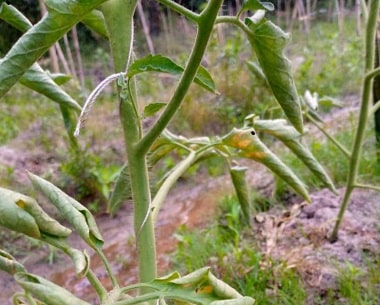
Building a food secured Africa

Building a food secured Africa

Tomato plants are very rewarding during harvest. This makes tomato farming a very interesting field of farming to practice. One of the most common challenges a tomato farmer encounters is LEAF CURLING. We will be talking about the causes and remedies of tomato leaves curling.
These in general terms can be called ENVIRONMENTAL FACTORS. In most cases, there is no control over all these but the effect they have on the plant could be reduced. The wind when moving at high speed could affect the stem and leaves of the tomato plant, especially the young transplant. There is no particular remedy to this.
Heat causes results in tomato leaves curling when the sun is too hot and the plant becomes stressed. In this case, the farmer need not worry because the leaves will return to their normal position when the weather is cool (evening) .
Excess nitrogen is responsible for the folding of leaves in tomato plants. It’s good that a nitrogen rich fertilizer is used during the vegetative stage of a tomato plant. But at maturity and fruiting stage, a fertilizer rich in potassium and phosphorus should be used so as to avoid bushy plant with folded leaves.
Herbicide effect is as a result of the herbicide residue in the soil or from the compost used on the soil/plant. While herbicide drift is as a result of wide spraying of maybe a nearby crop, but the herbicide carried by the wind touches the tomato plant, and it is absorbed. Either way the plant is affected and new leaf growth begins to curl downwards. Before you know it, other leaves begin to do the same.
Broamite is a colorless four paired pest that feeds on tomato plants. It is repellent to light and feeds majorly on young tomato plant leaves. Which as a result forms brown curled edges at the base of the leaf. The mite can be stopped with the use of sulfur-based miticide.